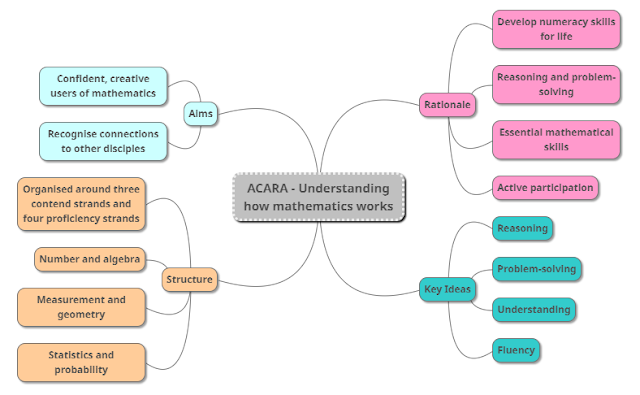What is mathematics? How do we teach mathematics?:
The big ideas:
We were challenged to rethink our mathematic assumptions, and were introduced to the language model of mathematics (LMM). Designed to support teachers extending their understanding of mathematics teaching (Jamieson-Proctor & Larkin), it focuses on language used and outlines each stage of development. The model aligns with the curriculum set by ACARA (2016) with teachers required to “provide language to build in the developmental aspects of the learning of mathematics” (ACARA, 2016).
 |
| A language model for mathematics education (Jamieson-Proctor & Larkin, n.d) |
Video demonstrating real-classroom use of language.
Personal reflection:
Reflecting on the lecture and reading, I found the clear design of the framework, especially the stages to make an excellent resource for teaching in the classroom especially with reference to language, visual and symbolical elements.
Concept, skills or strategy:
Reys’ recommends actively involving students with hands-on interactions, using concrete materials, and teachers to support reflection on learning (Reys et al., 2020). Implemented into classrooms, I would encourage group activities involving problem-solving, such as addition games where students are physically counted.
A possible misconception:
A previous misconception was that 0.12 is more than 0.2, as my schema tells me 12 is larger than 2. To remedy this, Reys’ et al. (2020) suggests relating to prior knowledge of fractions and place value, and the use of decimal number lines.
ACARA:
Resources:
DreamBox is a mathematics website designed for primary years. All mathematic strands are represented and delivered with engaging visuals.
I benefit greatly from auditory strategies and resources, I engaged more with musical elements in class.
Word count: 233
